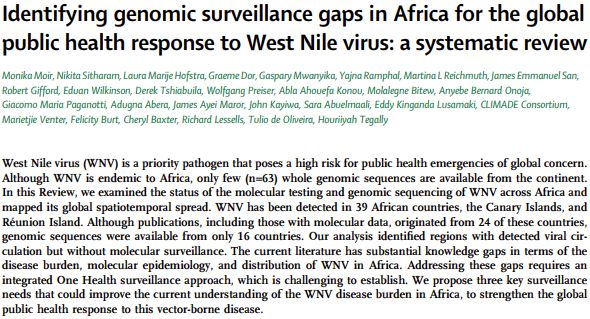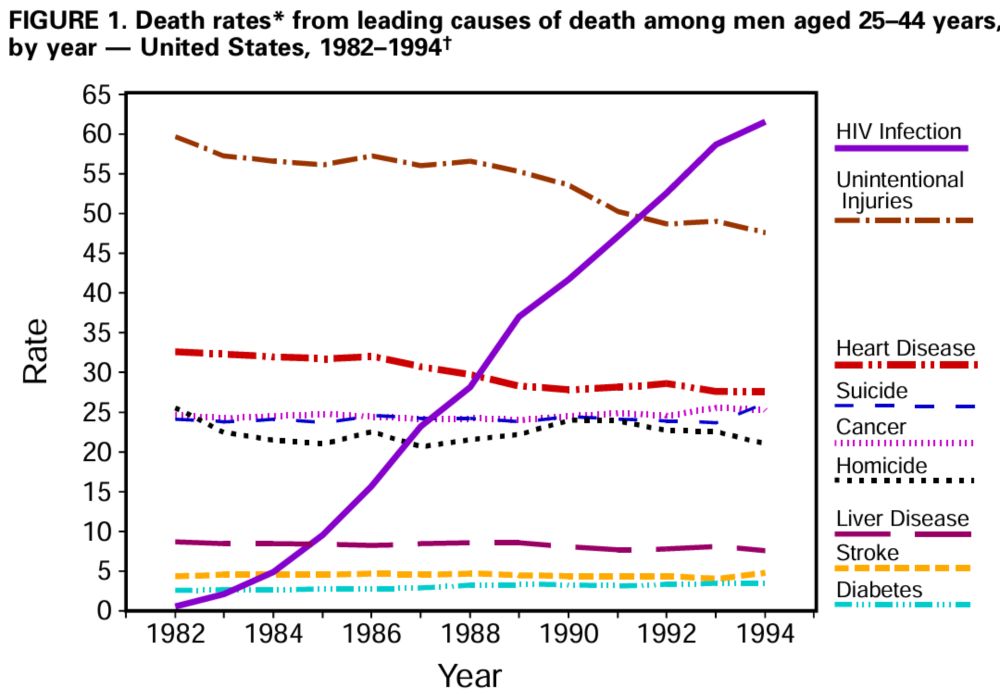
Infectious diseases clinician and epidemiologist
Hon Consultant Infectious Diseases, Royal Free London
Hon Prof Infectious Diseases & Health Security, UCL
Get your flu Vax! #IDSky #vaccines
www.gavi.org/vaccineswork...

Get your flu Vax! #IDSky #vaccines
www.gavi.org/vaccineswork...
Our RCT in Zimbabwe tried to improve uptake via financial incentives.
Results out in Lancet Global Health.
tl;dr Answer was no. Possibly as incentive only averted indirect costs of care & that wasn't enough.

Our RCT in Zimbabwe tried to improve uptake via financial incentives.
Results out in Lancet Global Health.
tl;dr Answer was no. Possibly as incentive only averted indirect costs of care & that wasn't enough.
✅ Just Accepted
#IDSky
🔗 https://bit.ly/3WbLI1G

✅ Just Accepted
#IDSky
🔗 https://bit.ly/3WbLI1G
📈 This interrupted time series study (2018–2022) found significant increase in HAIs and AMR organisms following the onset of the pandemic
#IDSky
📄: doi.org/10.1017/ice....

📈 This interrupted time series study (2018–2022) found significant increase in HAIs and AMR organisms following the onset of the pandemic
#IDSky
📄: doi.org/10.1017/ice....
The University of Oxford’s Prof Katrina Lythgoe and Dr. Mahan Ghafari unpack ONS-CIS data on 576 persistent infections, rapid within-host evolution, and rare transmission after 1 month. #IDsky #MEDsky
Read our Q&A: www.contagionlive.com/view/persist...

The University of Oxford’s Prof Katrina Lythgoe and Dr. Mahan Ghafari unpack ONS-CIS data on 576 persistent infections, rapid within-host evolution, and rare transmission after 1 month. #IDsky #MEDsky
Read our Q&A: www.contagionlive.com/view/persist...
➡️A strain of Neisseria gonorrhoeae producing false negative results on Xpert CT/NG assay in England
🔎An atypical sixfold rise in #influenza A(H1N1)pdm09 cases in Denmark during summer
Full issue here 👉 bit.ly/eus2036
#EpiSky #IDSky #MedSky #STISky 🛟🦠🧫⚕️

➡️A strain of Neisseria gonorrhoeae producing false negative results on Xpert CT/NG assay in England
🔎An atypical sixfold rise in #influenza A(H1N1)pdm09 cases in Denmark during summer
Full issue here 👉 bit.ly/eus2036
#EpiSky #IDSky #MedSky #STISky 🛟🦠🧫⚕️
✅ Just Accepted
#IDSky

✅ Just Accepted
#IDSky
#MedSky #IDSky

#MedSky #IDSky
www.nature.com/articles/d44...

www.nature.com/articles/d44...

(also it seems like the inservice exam exposure histories are lifted from this skit 😂)
#IDSky
youtu.be/t0VFAyAtNdA?...

(also it seems like the inservice exam exposure histories are lifted from this skit 😂)
#IDSky
youtu.be/t0VFAyAtNdA?...
#FeteDeLaMusique
#FeteDeLaMusique
Identifying genomic surveillance gaps in Africa for the global public health response to #WestNileVirus: a systematic review
www.thelancet.com/journals/lan...
#IDSky #ClinMicro #ViroSky #OpenAccess #OA

Identifying genomic surveillance gaps in Africa for the global public health response to #WestNileVirus: a systematic review
www.thelancet.com/journals/lan...
#IDSky #ClinMicro #ViroSky #OpenAccess #OA
Stay tuned for our interview on this coming soon: www.contagionlive.com/view/danish-...

Stay tuned for our interview on this coming soon: www.contagionlive.com/view/danish-...
A new intern asked me that last week.
I didn’t answer it fully then -- but I did here. #IDSky blogs.jwatch.org/hiv-id-obser...

A new intern asked me that last week.
I didn’t answer it fully then -- but I did here. #IDSky blogs.jwatch.org/hiv-id-obser...
It is recommended to always wash these products before eating, especially for those at risk.
doi.org/10.2807/1560...

In this secondary analysis of the RIFASHORT trial we classified TB disease severity at baseline and show that for the majority of people 4-months of rifampicin-based treatment, without the use of a quinolone, was non-inferior to the 6-month SOC.

In this secondary analysis of the RIFASHORT trial we classified TB disease severity at baseline and show that for the majority of people 4-months of rifampicin-based treatment, without the use of a quinolone, was non-inferior to the 6-month SOC.
Phenomenal work!
(Note, all sequencing, analyses, response, etc. done locally!)
virological.org/t/genomic-ep...
Phenomenal work!
(Note, all sequencing, analyses, response, etc. done locally!)
virological.org/t/genomic-ep...
Delighted that @ukhsa.bsky.social has played a pivotal role in developing and synthesising evidence to support the national vaccination programmes for gonorrhoea and mpox. This is in addition to hepatitis A and B and HPV. 1/2

Delighted that @ukhsa.bsky.social has played a pivotal role in developing and synthesising evidence to support the national vaccination programmes for gonorrhoea and mpox. This is in addition to hepatitis A and B and HPV. 1/2
academic.oup.com/jpubhealth/a...

"Homelessness and #Bartonella quintana Infections" #idsky
Interesting lineup of articles for discussion on an underrecognized issue.
wwwnc.cdc.gov/eid/podcasts

"Homelessness and #Bartonella quintana Infections" #idsky
Interesting lineup of articles for discussion on an underrecognized issue.
wwwnc.cdc.gov/eid/podcasts
✅ Just Accepted
#IDSky

✅ Just Accepted
#IDSky

